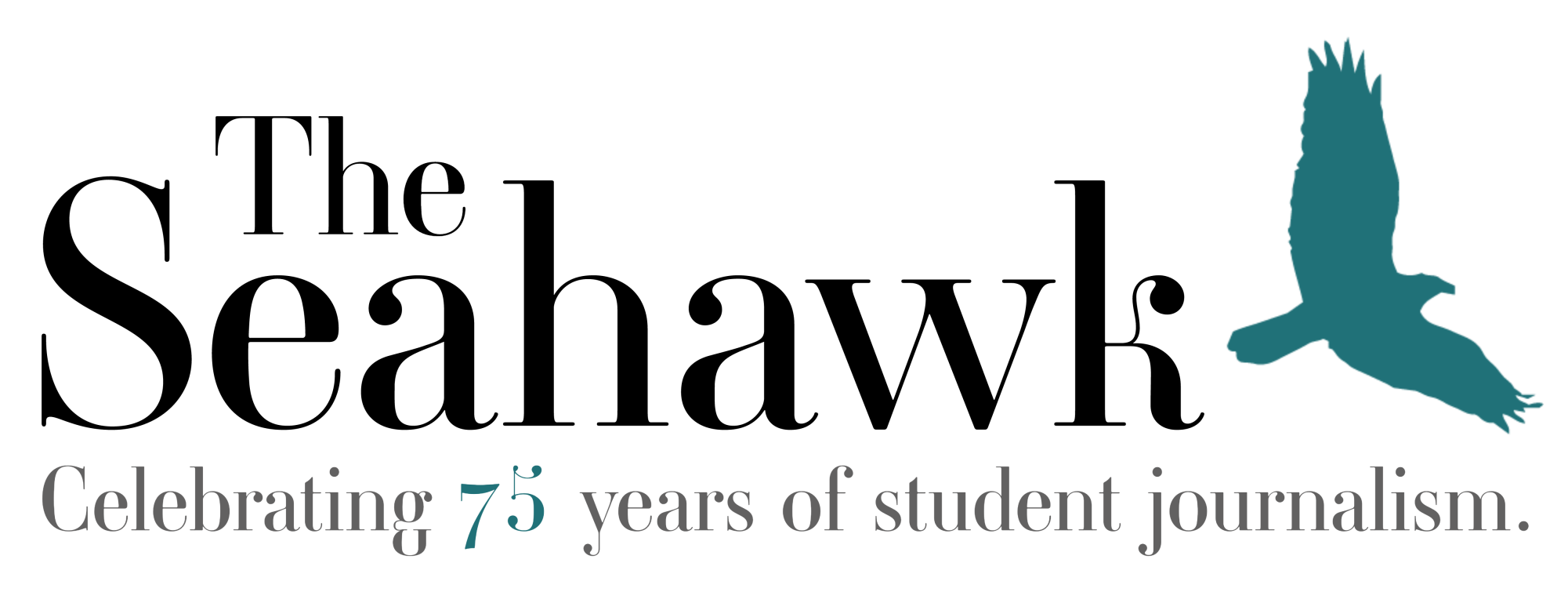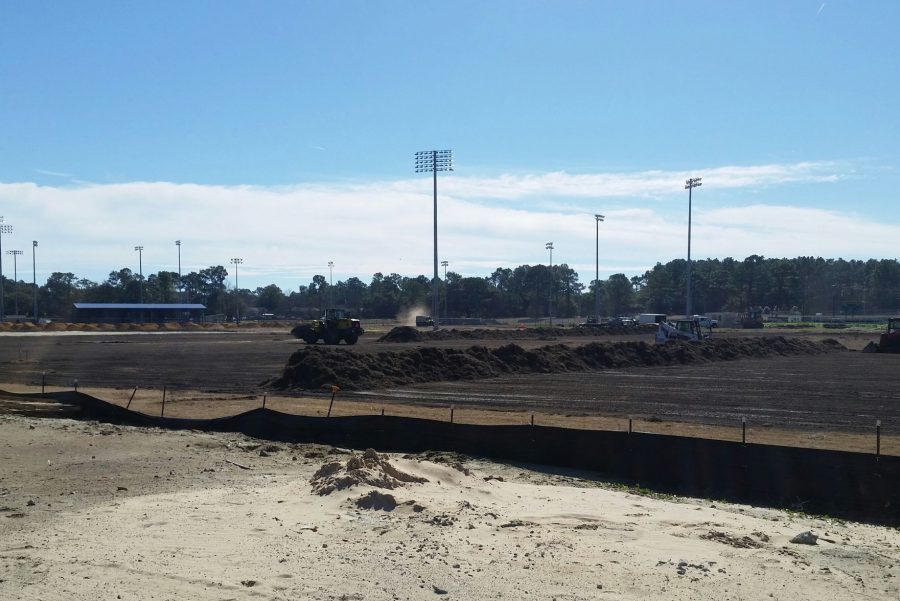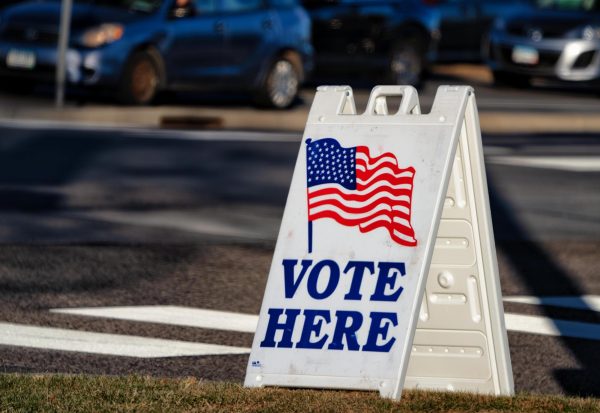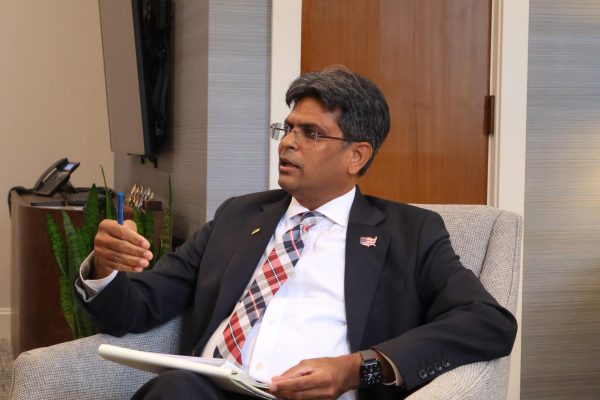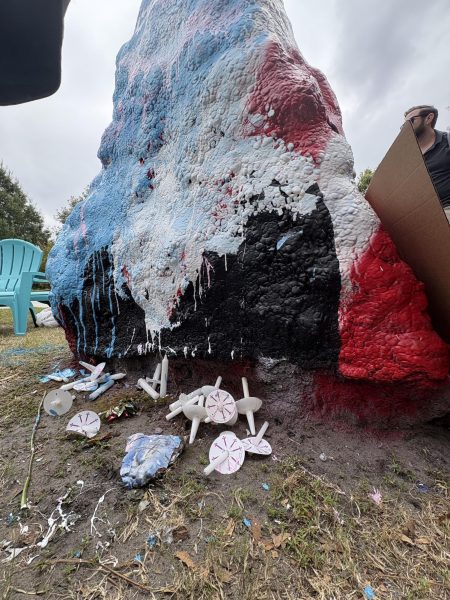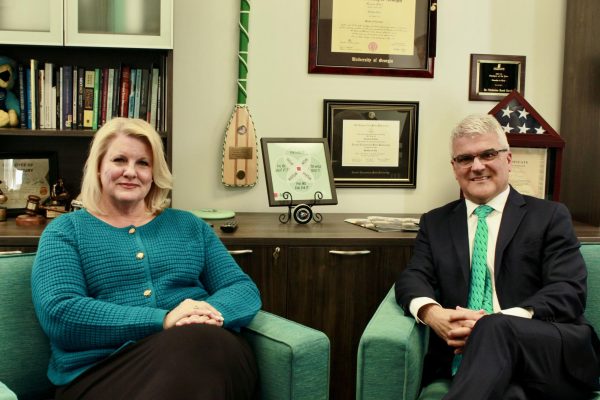Construction begins on intramural fields, year after project was announced
After a year since the university told students that the intramural fields located between the soccer stadium, Brooks Field and Riegel Road would be closed for reconstruction, the university has now officially stated that they will begin reconstruction efforts on the field this semester.
In an email sent out to the entire university, the Office of University Relations stated that, “Construction on the new campus recreation fields … will begin on Thursday, Jan. 26.”
The email goes on to say that the project is expected to be completed by summer 2017, with four new fields, two with synthetic turf and one and a half with natural turf, according to Director of Campus Recreation Tim McNeilly. These fields should be ready for use in fall 2017.
The natural turfs will be made of grass whereas the synthetic turfs will be made of synthetic materials and an organic infill.
Back in February 2016, The Seahawk published a story on how work to these athletic fields could prove to be detrimental to the health of athletes using the fields.
In the article, reporter Robert Manion discussed the dangers that installing artificial turf could pose.
According to recent research, the use of artificial turf in athletic fields correlated with cancerous effects on athletes through the use of a rubber crumb infill.
The school stated in the email that they will use synthetic and natural turf. Though synthetic turf and artificial turf are the same, McNeilly assured that the university would be using an organic infill of crushed coconut husks and cork products.
The school planned to use a rubber crumb infill, but changed their minds after hearing about the research being done and reviewing the problems it posed.
The email also said that heavy truck traffic is expected from construction in this area, and access to the fields via the gravel parking lot between the Boseman Field and Greene Track may be limited during this time.
“Pedestrians, riders and drivers are asked to exercise caution and patience while in the vicinity of the construction area,” the OUR email said.
This construction comes a year after the university first announced the project. These stalls on construction have left some intramural team players frustrated with the university over a lack of space to play and practice their sport.
“We used the fields about four times a week,” said UNC Wilmington student and Club Ultimate Team Captain Austin McGrayne. “We were told at the beginning of the fall 2015 semester that the fields would be closing at the end of that semester and we could hopefully be back on them by spring break’s end 2016. Since then, we have received very spotty updates with very little information, and definitely no one told us it would be prolonged into the spring 2017 semester.”
Since the announcement that the fields would be closing, McGrayne’s team has been using the Gazebo complex as well as off campus sites since the beginning of the spring 2016 semester. Due to this, McGrayne claims that practices have been “drastically affected.”
Club Ultimate A team member and former B team captain, Thomas Theunissen, voiced similar concerns as McGrayne.
“When the fields first closed, I do remember hearing a lot of different things about when they would be done, but no formal plan,” Theunissen said. “As time went on I heard about the different problems that were arising and assumed that it was going to be awhile.”
The problems that the project faced included problems with “submittals” from contractors interested in bidding on this project, according to McNeilly. The discussion over rubber crumb infill use also halted the project a bit as the university talked about alternatives.
“There is no concern for us with the crumb rubber because the science is inexact on what they are going to release, whether or not there are carcinogens in the crumb rubber,” McNeilly said. “We avoided that altogether and just switched the infill, and that took substantial time.”
Theunissen also recalled the email OUR sent out at the beginning of this current semester saying that the fields were now set to be done in the summer of 2017. He just hopes that this is true for the students and players that will follow him; however, he is not optimistic.
Since the fields have been closed, Theunissen remarked how having to practice off campus became a challenge for the team. With the closest usable fields about 20 minutes away, it hindered attempts to keep a steady practice schedule.
“Occasionally we are able to practice on the Gazebo and Softball fields,” Theunissen added, “but we can never get a consistent time or reasonable field space so we usually use that as a backup.”
“My biggest issue with the whole ordeal is that the field has just been sitting barren for over a year now,” McGrayne explained. “No work being done on it or anything, and at the same time we’ve been told we aren’t allowed to use it because it’s under construction.”
McGrayne acknowledged that practices on the fields may have damaged the grass, especially if there was no maintenance being done, but they are “tearing [the fields] up anyway, so why not let the clubs help [in] the destruction.”
The situation has been “extremely frustrating,” according to McGrayne, because it has “drastically limited our practices,” and at same time no plans have been divulged for construction, nor has any construction been done to the actual field itself. McGrayne also noted how thousands of dollars from student fees go to have open recreation at this college campus.
“To be blunt, it’s absolutely ridiculous,” McGrayne said. “Also, the school has been horrible at disclosing relevant information and has given horrible timelines.”
In response to the concerns of intramural teams, McNeilly said that he “doesn’t see this as a lack of communication,” rather that these teams did not come in and ask the recreational staff about any progress on the construction.
“We have never been able to identify and give them a firm deadline,” McNeilly said. A firm deadline would be impossible, according to McNeilly, because there are always stipulations that mess with schedules, like contracting and weather related issues.
McNeilly also noted that the intramural staff had been working diligently to ensure that all intramural teams could use the Gazebo Fields equally, but when there are so many teams sharing a small space, there will always be problems with scheduling.
Currently, Club Ultimate is ranked third best in the nation. According to Theunissen, it feels as though the University Club Sports does not care about the team’s success. Theunissen also noted how difficult it has been to get people involved when there is no field space. The amount of new people that have been playing Ultimate has dropped off severely since the fields were closed, according to Theunissen.
McNeilly acknowledged that they at least did not have to shut down intramural sports entirely, like Appalachian State University did when they renovated their athletic fields.
Overall, the university hopes that the completion of this project will help intramural teams since games will not have to be cancelled on an artificial turf when it rains. They also hope that it fosters an interest in more students to participate in intramural and club sports.

